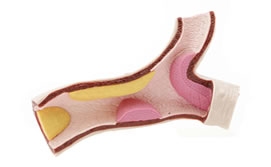The Spanish Minister of Science and Innovation, Cristina Garmendia, inaugurated on November 2nd the world’s first laboratory for the production of bioartificial organs for transplants using stem cells.
The laboratory, located in Madrid’s Gregorio Marañon General University Hospital, puts Spain at the head of the international vanguard in this technology.
Regenerative medicine is looking for alternatives to conventional organ transplants, toward the goal of substituting destroyed tissue with new tissue, created from different types of stem cells. The laboratory for the production of bioartificial organs from stem cells at the Gregorio Marañon General University Hospital is a pioneer facility that forms part of the SABIO project (Scaffolds and Bioartificial Organs for Transplantation). This is a joint initiative of the Gregorio Marañon General University Hospital in collaboration with the University of Minnesota and Spain’s National Transplant Organization.
The Cardiology Department at Madrid’s Gregorio Marañon Hospital, led by professor Francisco Fernández-Avilés, is one of the best-known centers in the world for the use of cellular therapies in cardiac regeneration; its innovations have been of enormous importance. Among them should be highlighted the use of cells derived from bone marrow in patients with myocardial infarction, and the use—for the first time in the history of medicine—of cells derived from fat, in patients with chronic heart failure.
One of the most notable lines of international collaboration in this service is that which has been established with the University of Minnesota’s Center for Cardiovascular Repair, directed by professor Doris Taylor. This preclinical research center has been studying for decades the possible use of different types of cells in the reparation of the heart, using diverse animal models of disease. The relationship between Marañon’s Cardiology Department with professor Taylor’s laboratory is very close, and has resulted in a revolutionary project aimed at the use of adult stem cells to create bioartificial hearts and other organs.
http://www.madrid.org/cs/Satellite?pagename=HospitalGregorioMaranon/Page/HGMA_home
